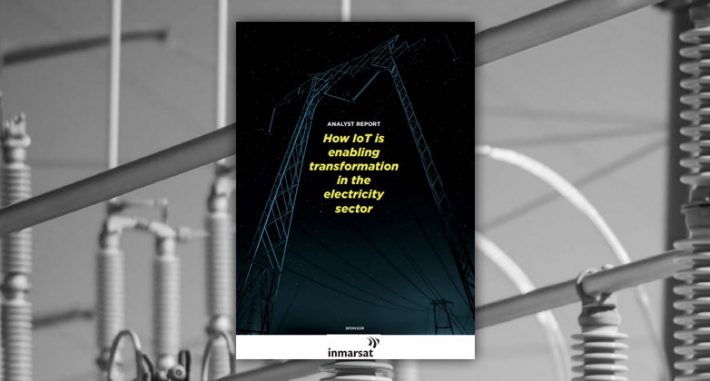Over the coming decade the electricity sector must face increasing demand, increasing regulation, and fundamental changes in the way that electricity grids work on a day-to-day basis. New fluctuating energy sources must be integrated into existing grids, and many of today’s customers may take on a second role as suppliers, writes Jim Morrish, a founding partner at Transforma Insights.
The deployment of new technology is critical to enabling the changes that must happen, and a wide variety of technology-based solutions are being deployed in the electricity industry right now. These range from smartmetering applications through to remote asset monitoring and control solutions and solutions to better enable a remote workforce. According to research undertaken by Inmarsat, investment in IoT solutions overall is expected to be significant for electricity utilities, and with cost reduction and increased efficiency come related benefits in sustainability
Introduction
The electricity industry worldwide is facing a period of unprecedented change. In recent decades distribution grids and other infrastructure have become increasingly smarter, but today’s environment is characterised by a number of disruptive changes. These range from increased demand overall and the rapid adoption of evehicles, through to an expected increased incidence of harsh weather events associated with global warming. The fundamental dynamics of electricity distribution are changing too. Historically, electricity supply has been dimensioned to match demand but with a shift in the mix of energy generation towards renewable sources (particularly solar and wind) the associated unpredictability of electricity supply is ushering in a need to manage demand to match supply. This is a complete reversal of traditional grid dynamics. Associated with this development is the advent of microgrids that optimise the generation and consumption of electricity within a campus or similar context. Such microgrids will only draw power from an external grid when they are experiencing a net deficit within the local network. These grids may also seek to supply power back to an external grid in circumstances where local generation exceeds local demand. This reverse-supply dynamic can extend down into consumer markets, with households with photovoltaics installed seeking to supply excess power back to the grid.
How technology can help
Looking at some specific applications in the electricity industry can help us to develop a picture of what the future might look like. As William Gibson noted, “the future is already here – it’s just not very evenly distributed”. The following is a far from complete list of some of the applications that will change electricity industry operations in coming years:
- Smart metering to provide accurate consumption information, and potentially to manage local storage and consumption – in the case of demand response – and enable reverse-supply.
- Monitoring distribution substations, transformers, and feeders to ensure that any faults can be quickly identified and resolved, or pro-actively managed.
- Remote monitoring and control of network assets, ranging from reclosers – that automatically interrupt power in the case of a supply problem – to voltage regulators.
- Drone inspection for transmission and distribution assets, potentially incorporating artificial intelligence to identify any abnormalities.
- Remote monitoring for a range of renewable energy generation assets, including wind turbines and photovoltaics – either at grid level, or at campus or even consumer level.
- Deploying connected inductive sensors throughout a grid to monitor the efficiency of grid operations, and potentially combining this information with smart metering information and using artificial intelligence to identify and combat energy fraud.
- Fleet management solutions for maintenance field forces, including job allocation systems, safety monitoring solutions, and solutions that enable remote workers to access second- and third-line support – possibly using augmented reality and shared video images.
This is a diverse range of applications, but any list can only ever be indicative of the innumerable niche and optimised applications that will be deployed in the electricity sector in coming years. A survey of electricity utilities undertaken by Inmarsat found that in five years’ time the average respondent expected to have achieved a 30% saving in their organisation’s costs by deploying IoT solutions. The same respondents are likely to benefit from additional related benefits including in terms of overall efficiency and carbon reduction. Any IoT solutions that reduce the need for field engineers to visit remote sites are likely to be particularly impactful, and may have associated health and safety benefits. The same survey suggested that electricity utilities would spend 9.9% of their IT budgets on IoT projects in the next three years, a figure matched only by spend on cloud computing. Other big spend areas included related topics such as next generation security, big data analytics, machine learning, and robotics.
Continue reading this article on Page 23 inside IoT Now Magazine Q4 2021










